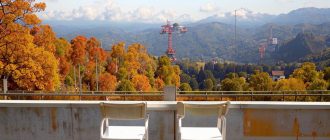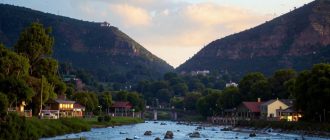5 places worth visiting Tajikistan for. Traveler’s Notes

This country will surprise both those who like to contemplate nature and those who prefer architecture.

President of Pro-Vision, author of the Vinogradov.story community
Tajikistan is not the most popular travel destination, even by the standards of Central Asia. However, the country has an impressive potential: a modest territory in the foothills of the Pamir Mountains is home to an immense number of fascinating natural objects, authentic mountain villages and ancient monuments of history and culture. And all this can be seen for very reasonable money. Where to start your acquaintance with Tajikistan, I will tell you further.
Dushanbe
Dushanbe means “Monday” in Tajik – it was on this day three centuries ago that a spontaneous bazaar gathered at the crossroads of trade routes, which became the “foundation” of the future capital. Over 300 years, patterned mosques, museums and theaters were built there, gardens and parks were laid out – but the spirit of “wild” old Asia still dwells somewhere nearby: in the ornaments of kilims and namats, in the generous portions of pilaf in the family teahouse and in the cries of the donkey, which, despite attempts to ban cattle within the city limits, never fails to cut into the dense rows of cars with its owner.

Dushanbe
Hissar fortress
At the exit from the relatively young capital, travelers are greeted by the Gissar Fortress, which is about 2.5 thousand years old. Built of burnt brick, at different times it served as a resting place for trade caravans, a quarter of craftsmen and the residence of the bey of Bukhara Emirate with a green garden, terraces and a swimming pool. Today only the gates with two cylindrical towers and narrow loopholes remind of the former luxury. But they remind regularly – they look at travelers from a 20 samoni bill.

Hissar fortress
The Pamir Road between Dushanbe and Khorog.
The legendary Pamir Road connecting Dushanbe with Kyrgyz Osh is one of the most beautiful highways in the world. On its western section, stretching from the Tajik capital to the city of Khorog, cars follow the border with Afghanistan in the valley of the Panj River, cross the dangerous but picturesque Khaburabot Pass and finally end up in Khorog, a green city in a mountain valley with a unique botanical garden of more than 4,000 plants.

Pamir Road
“Seven Diamonds” of the Fann Mountains
In the valley of the Shing River, at the foot of the Fan Mountains, seven lakes – seven diamonds of Tajikistan – are spilled with crystal turquoise drops. The largest of them, Marguzor, requires a serpentine ride to the height of 2140 meters. The most desperate risk to do it on two, not four wheels: several routes for extreme bicycle trekking run along the cascade of Seven Sisters. However, the views from the car window should not be underestimated either: behind each turn of the serpentine road you can see the natural landscapes that are iconic for Central Asia – mountain peaks and gray slopes, rare green oases, glaciers, cliffs, gorges and waterfalls.

Marguzor Lakes
Khujand
Ancient Khujand, standing on the Great Silk Road, was the trading, cultural and scientific center of Maverannahr long before the emergence of modern state formations. However, Tajikistan carefully preserves Khujand’s heritage for posterity – the fortress of the same name, the mausoleum of Sheikh Musleheddin, the Arbor Palace, a massive monument to the era of the Tajik SSR, and, of course, the legendary Panchshanbe Bazaar. It is worth preparing for a trip to the market – at least to be hungry and to tune in for uncompromising bargaining in the best traditions of the Great Silk Road.

Khujand







